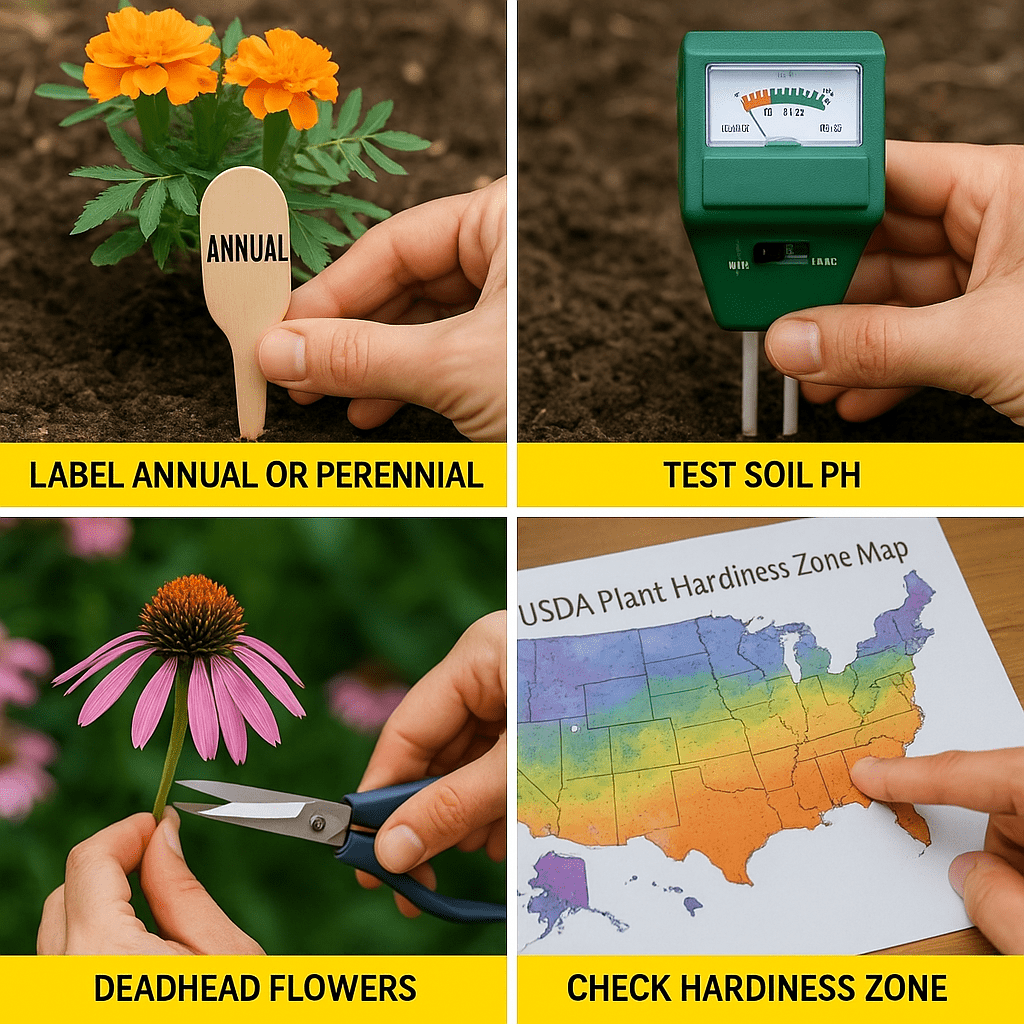If you’re just getting started with gardening, the terminology can feel overwhelming. From mulch and compost to hardiness zones and deadheading, there are many terms that experienced gardeners use casually—but can leave beginners feeling lost. That’s why we’ve put together this gardening glossary: 20 terms every beginner should know to help you build confidence and grow with success.
This guide breaks down essential gardening terms in a way that’s easy to understand, complete with examples and explanations that will make your planting journey much smoother.
Why Learning Gardening Terms Matters
🌱 Build Confidence
Understanding the basic terms gives you clarity and helps you avoid beginner mistakes. Whether you’re reading a seed packet or following a blog tutorial, knowing the lingo helps everything make more sense.
🌿 Improve Garden Results
Knowing when to deadhead, how to test soil pH, or what composting really means can lead to healthier plants and more productive gardens.
🌼 Communicate Effectively
When you join gardening communities, take classes, or ask questions at your local nursery, using the right terminology makes conversations more helpful and efficient.
Gardening Glossary: 20 Must-Know Terms
1. Annual
A plant that completes its life cycle in one season—germinating, flowering, and dying within a single year. Examples include marigolds, petunias, and zinnias.
2. Perennial
A plant that lives for more than two years. It grows back each season, often stronger. Common examples: lavender, hostas, and daylilies.
3. Biennial
A plant that completes its life cycle in two years. In the first year, it grows leaves; in the second, it flowers and dies. Think parsley and foxglove.
4. Compost
Decomposed organic matter used to enrich soil. Composting includes food scraps, leaves, and grass clippings that break down into nutrient-rich humus.
5. Mulch
A protective covering (like wood chips, straw, or bark) placed around plants to retain moisture, suppress weeds, and regulate soil temperature.
6. Soil pH
A measure of soil’s acidity or alkalinity. Most plants prefer a slightly acidic to neutral pH (6.0 to 7.0). Testing kits help you determine this.
7. Hardiness Zone
A geographical designation that helps gardeners know which plants are most likely to thrive in their climate. Based on average minimum winter temperatures.
8. Germination
The process of a seed developing into a seedling. Good soil, moisture, and warmth are essential for germination.
9. Deadheading
Removing faded or dead flowers to encourage more blooms and maintain plant health.
10. Thinning
Removing excess seedlings to give others more space, sunlight, and nutrients. This improves overall plant development.
11. Transplanting
Moving a plant from one location to another—usually from indoors to outdoors or from pot to garden bed.
12. Pruning
Cutting back branches or stems to control shape, remove dead parts, and stimulate growth.
13. Drainage
The ability of soil to allow water to flow through it. Poor drainage can lead to root rot.
14. Fertilizer
A substance added to soil or plants to supply essential nutrients. Comes in organic (compost, manure) or synthetic (granules, liquids) forms.
15. Full Sun / Partial Shade
Light requirements for plants. Full sun means at least 6 hours of direct sunlight; partial shade means 3–6 hours of indirect or dappled light.
16. Rootbound
When a plant’s roots outgrow its container and become tangled, limiting water and nutrient uptake.
17. Propagation
Creating new plants from cuttings, seeds, or other parts of a parent plant. A common way to multiply your garden for free.
18. Pollination
The transfer of pollen from the male part of a flower to the female part, leading to fruit and seed production. Often done by bees, butterflies, or wind.
19. Bolting
When a plant (usually a leafy green like lettuce or spinach) flowers and goes to seed too early, often caused by heat or stress.
20. Heirloom
Traditional plant varieties that have been passed down for generations. Known for their flavor, uniqueness, and seed-saving potential.

Tips for Beginners to Apply These Terms
Understanding the glossary is only half the battle—here’s how to make it actionable:
- Label your plants with tags that include whether they’re annuals or perennials.
- Start composting kitchen scraps to enrich your soil organically.
- Use a soil pH tester before planting to choose the right crops.
- Deadhead and prune weekly during growing seasons for better bloom cycles.
- Check hardiness zones before buying new seeds or plants online.
Share this glossary with someone starting their garden—it could save them months of trial and error!
Ready to put your knowledge into action? Learn how to position your plants for the best sunlight, watering, and spacing in your garden.
Conclusion: Master the Language of Gardening
Learning how to garden is about more than just watering and hoping for the best. By familiarizing yourself with these 20 essential gardening terms, you’ll make smarter decisions, improve your plant care routine, and feel more empowered every time you step outside.
Bookmark this guide for quick reference, and don’t forget to share it with your fellow green-thumbed friends!
FAQs
What’s the difference between an annual and a perennial?
An annual lives for one season, while a perennial comes back year after year.
Why does soil pH matter?
It affects how well your plants absorb nutrients. Some plants prefer acidic soil, while others do best in neutral or alkaline soil.
How often should I deadhead flowers?
Check weekly during bloom season. Removing spent flowers helps many plants produce more blooms.
Need basic gardening tools like a soil pH tester, pruning shears, or seed starter kits? Check out affordable options on Amazon.
